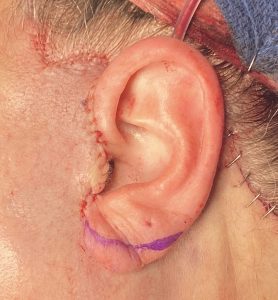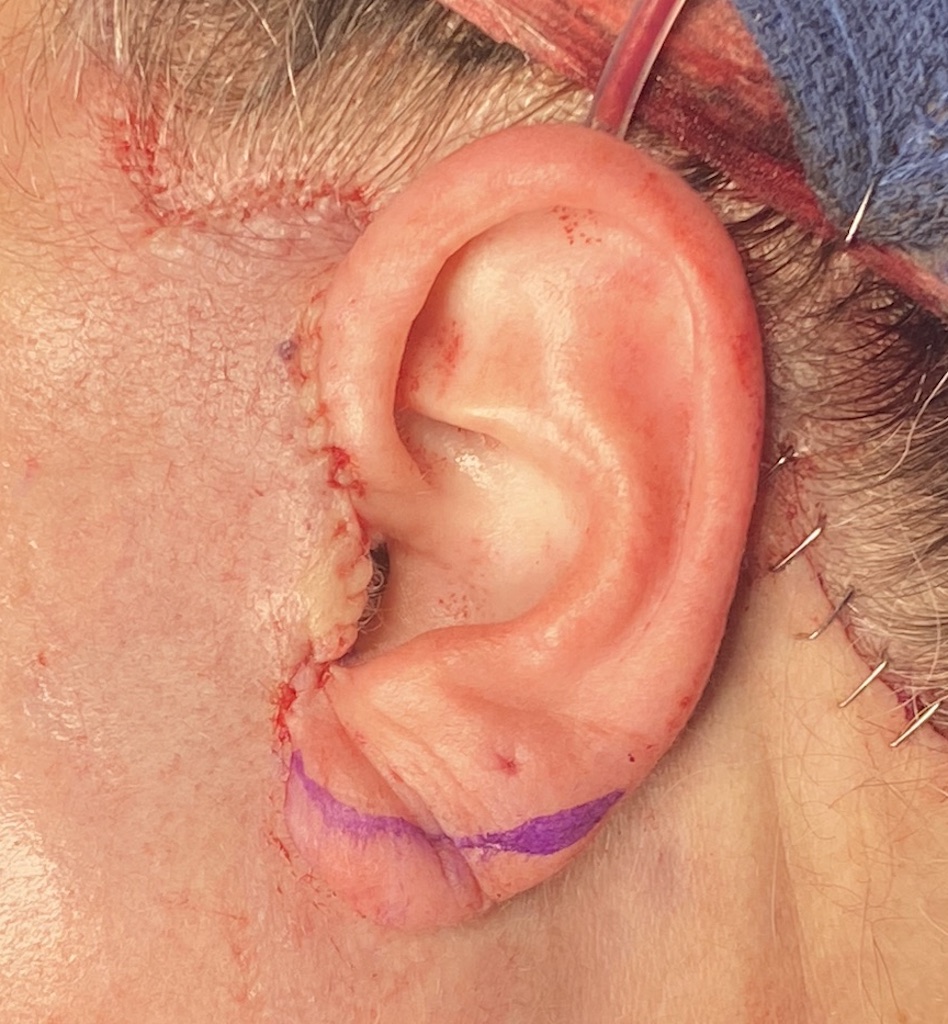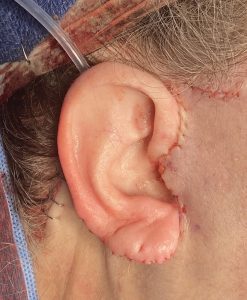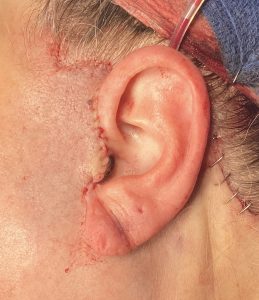Background: While there are various methods of performing a lower facelift the one aspect that all share are am incision in and around each ear. One can debate whether the pre auricular incision goes in front of or behind the tragus but it will always wrap around the earlobe on its way to the back of the ear and into the occipital hairline. As a result the earlobe is on a peninsula in facelift surgery.
Because the earlobe has two different types of attachments to the face the impact of a facelift on its appearance will differ. In the attached earlobe this typically lengthens little with age and the scar lone around the bottom of the ear may be slightly more visible. In the unattached earlobe it has a far greater tendency to undergo age-related elongation and the scar line is hidden as it cradles up under the earlobe.
In the unattached earlobe that has become longer with age the effects of a facelift on it may make it even longer. At the least with the temporary swelling it can look enormous in size for weeks after the surgery. (as a result of being a peninsula) Even by perception when the swelling subsides the earlobe will likely appear bigger/longer. The facelift surgery provides an opportunity to reduce the size of the earlobe and improve the result of the facelift.
Case Study: This older female desired neck-jowl rejuvenation in which she also had large earlobes at over 65mms in ear length per side. The lobes were long with two piercings in them and wrinkle across them. As a female she had worn large ear rings her entire life.


Earlobe reduction can be safely performed during a facelift due to the excellent blood supply of the face in general and the ear in particular. It is technically easier to perform in a large unattached earlobe because the bottom of the earlobe and the facelift incision line remain separate and the healing of one does not adversely affect the other despite their proximity. It improves both female and male facelift results even though it is not the primary intent of the procedure or where the procedure has its most profound effect.
Key Points:
1) Large earlobes are common in older females who undergo facelift surgery.
2) Earlobe reduction can be done at the same time as facelift surgery.
3) The inferior helical rim excision technique is the preferred method particularly in unattached earlobes.
Dr. Barry Eppley
World-Renowned Plastic Surgeon







